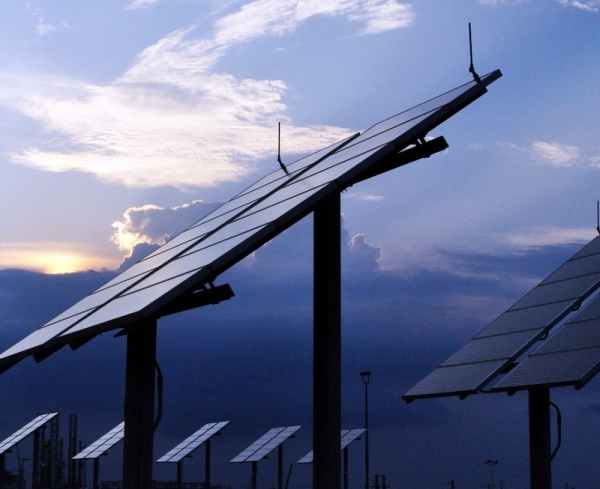EU budget offers little on post-2025 climate funds
An agreement was reached between member states and the EU Parliament in the early hours of Wednesday morning (7 February) to top up the EU budget.
This will give Europe the financial space to "tackle some of the main challenges of the decade," said EU Commission president Ursula von der Leyen, relieved that the months-long obstruction by Hungarian prime minister Viktor Orbán had finally been overcome.
But while member states and MEPs quickly agreed on the main item on the list, a €50bn top-up for Ukraine, some co-negotiators felt the budget left too little for other things such as climate and energy investments, which could pose trouble for the bloc’s climate targets when existing green funds run out.
"Ukraine can rely on us. Vladimir Putin is the loser of our budget agreement," said MEP Rasmus Andresen, who represented the Greens at the negotiating tables. "But we [also] need to support our economy and for infrastructure investments."
This deal "weakens [EU] competitiveness and innovation," he added.
Less money, more problems
As part of Wednesday’s budget deal, parliament and member states agreed to slash the renewable investment fund — called the Strategic Technologies for Europe Platform, or STEP — to just €1.5bn.
This fund was initially meant to be far larger and was launched by von der Leyen as the EU’s answer to the US Inflation Reduction Act — a far larger fund which includes €720bn in climate and energy investments.
The STEP fund will now be used as a pot of money for military investments only. This had already been decided by member states in December, and there was little parliament could have done to change this. But with the EU pandemic recovery fund set to run out in 2026, member states will miss out on €100bn in annual climate investments.
And with STEP functionally off the table as a potential climate investment fund, there is little to replace except more national investments.
This coincides with stricter debt and spending rules member states, and parliament agreed on in January.
Calculations made by the Brussels-based think tank Bruegel show that most member states will need to cut back on investments significantly from 2025 onwards.
"After 2025, it will be virtually impossible for countries with higher debt to make the necessary [green] investments," the Austrian economist Philipp Heimberger previously told EUobserver.
"EU governments risk leaving important programmes underfunded, and the heads of state and government are responsible," said Andresen.
What about those climate targets?
Added to this is the escalating climate crisis that leaves countries less and less time to reduce emissions.
According to climate targets presented by the commission this week, member states would cut greenhouse gas emissions by 90 percent by 2040.
The plan, however, is light on financial details and leaves it to member states to source the necessary funding from private enterprise.
Although not all climate funding will need to come from governments, some wondered how EU member states are supposed to achieve the 2040 climate targets without clarity on available funds.
"A target alone won’t cut it," said Guillaume Kerlero de Rosbo, the director of ecological studies at the Institut Rousseau, a Paris-based think tank.
Governments must "quickly double" public investments "from €250bn to €510bn" annually to achieve the EU’s climate targets and maintain competitiveness against "the soaring Chinese cleantech manufacturing and US subsidies," he said.
Indicating more funding battles lie ahead, commissioner Maroš Šefčovič, who took over responsibilities to lead the EU’s Green Deal from Frans Timmermans last year, said the "next budget [post-2027] must really reflect geopolitical reality."
"We need funding to deliver on all priorities, including climate change, competition, and strategic autonomy," he said.
Parliament also pushed for a 2025 evaluation of the STEP budget to "inform decision-making post-2027."
But whether this will result in a successful push for more EU green funds will remain an open question for the foreseeable future.
Payback time
Parliament also signed off on cuts to foreign aid to boost border protection and curb migration, already agreed on last week by member states.
Wednesday’s agreement also introduces a mechanism to pay for the increasing costs related to the repayment of loans under the pandemic recovery fund (Next Generation EU), which, due to the European Central Bank’s interest rate hikes, have increased markedly since June 2022.
This potentially puts other funding pots at risk of more cuts. To protect programmes such as the Erasmus student exchange programme, it has now been agreed that unspent money from the EU budget that would otherwise be deposited back to member countries will be used to pay back loans.
National governments may also be liable to make additional contributions. But rules for this are unclear, Andresen said, and could now lead to "tough negotiations and further cuts" down the road.
"Clarity looks different," he said.

